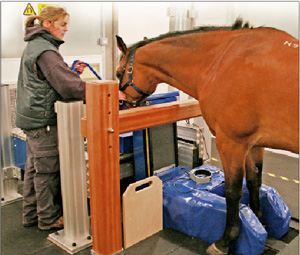Human hospitals are friendlier than they used to be. The reason lies in the fact that physically comfortable environments really do support better outcomes for patients. Research into what is termed evidence-based design in human healthcare has shown that noise is a major source of stress and that reducing noise has a positive effect on patients and staff.

If reducing stress is a sound goal for human healthcare, shouldn’t it also apply to veterinary care? It can, and it does! Reducing stress also improves outcomes for animal patients.
In this article, we will tackle one of the biggest problems in any hospital setting: excess, unnecessary noise. Whether you are building new or remodeling, you can implement two simple strategies for noise control in your hospital and enjoy a quieter environment.
No. 1: Prevention
As designers, we love to solve problems. Noise is a problem at which we can throw all sorts of solutions, some of them very expensive. However, expensive solutions are impractical, sometimes impossible and always unpopular. This is why we believe in designing to prevent noise.
Use Vestibules as Sound Locks
If you have experience with standing MRI, you know that the secret to getting good images lies in keeping your sedated patient still. This is virtually impossible if the horse is reacting to sound. There are many other examples of both exotic and mundane circumstances that rely on a patient being calm and still. An effective method for preventing noise in imaging and procedure spaces is to build a vestibule, or more simply put, to provide two sets of doors between loud and quiet spaces.
Create Separate Utility Areas
Most hospitals are not planned with enough staff support areas for essential tasks such as doing laundry, stocking supplies and cleaning tools. These tasks, which produce audible clatter, often end up being performed too close to medical work spaces. Plan ahead for adequate staff support areas adjacent to, but separate from, your working spaces. This will reduce the perception of chaos.
Banish Non-Audible Sources
Horses hear differently than people do. They do not hear as well in the lower frequencies, and their threshold of auditory perception is higher than ours. That said, horses hear high frequency sounds up to 30,000 Hertz, which is well is beyond the 20,000 Hertz limit for people. This means that horses are processing noises that we are not even aware of.
If you have a choice, it is best to keep your hospital’s mechanical and primary equipment away from equine spaces in case it produces obnoxious non-audible high frequency sounds.
Isolate Spaces
One of the most developed bodies of knowledge in architectural acoustics is the science of sound assemblies. Sound assemblies are tested and rated with a Sound Transmission Class (STC), which is a measure of how well a building partition attenuates sound. You can get information on the STC of different building assemblies at www.stcratings.com/assemblies.html. Here are a couple of rules of thumb:
Assemblies with greater mass do better. As a result, masonry walls are better at stopping sound transmission than stud walls.
An assembly is only as good as its holes. Sound is like light. If you are building a wall to decrease the transmission of sound, don’t forget the major openings in that wall that will leak sound. At minimum, doors and windows in sound partitions should be insulated and gasketed.
No. 2: Reduction
Noise reduction within a room is its own unique problem. You may have done your best to prevent excessive noise around the hospital, but even so, each room is its own acoustical environment. Reverberant noise within a space is a big problem in veterinary hospitals because most sanitary finishes do not dampen sound. This is especially exacerbated in equine hospitals because ceilings are high and rooms are typically finished with hard surfaces.
The key is to use select materials that dampen noise while still achieving your desired level of sanitation. There are a few! Acoustic materials are rated by a Noise Reduction Coefficient (NRC), with 1.0 representing materials absorbing 100 percent of the reverberant noise that hits them within the tested frequency range. As an example, a typical acoustic ceiling panel may have an NRC of 0.6. Here are some effective materials for use in your hospital:
Rubber flooring and mats: Rubber is naturally absorptive and has an NRC of approximately 0.5, depending on the product.
Acoustic wall panels: A variety of different hanging and wall mounted acoustic panels are available. Some are easier to clean than others. For example, ripstop nylon-covered baffles can be wiped clean. Most acoustic wall panels have fiberglass cores and high NRC ratings. If you want to get the most bang for your buck, use thicker products, as these are effective in high frequency ranges.
Acoustic ceilings: Acoustic “lay in” panel ceilings may not be glamorous but they are ubiquitous in office buildings because they provide a space to run mechanical, electrical and plumbing systems and because they dampen noise so effectively.
In a horse hospital, you will need to choose a system that meets the following parameters:
· NRC ratings of at least 0.55
· A panel that is designed for human healthcare or clean-room design
· A suspension system that is designed out of aluminum rather than steel to prevent rust in quasi-indoor environments
Conclusion
Designing to prevent noise in equine hospitals is an outgrowth of evidence-based design in human healthcare. While we have less research to back up the idea that reducing noise is good for animal patients, we can recognize the importance of an overall strategy to reduce stress, improve outcomes for patients and support the well-being of horses and staff. Challenge yourself to create a quieter workspace!
Heather E. Lewis, AIA, NCARB, is a principal of Animal Arts, an architectural firm that has designed animal hospitals and animal-care facilities since 1979.








